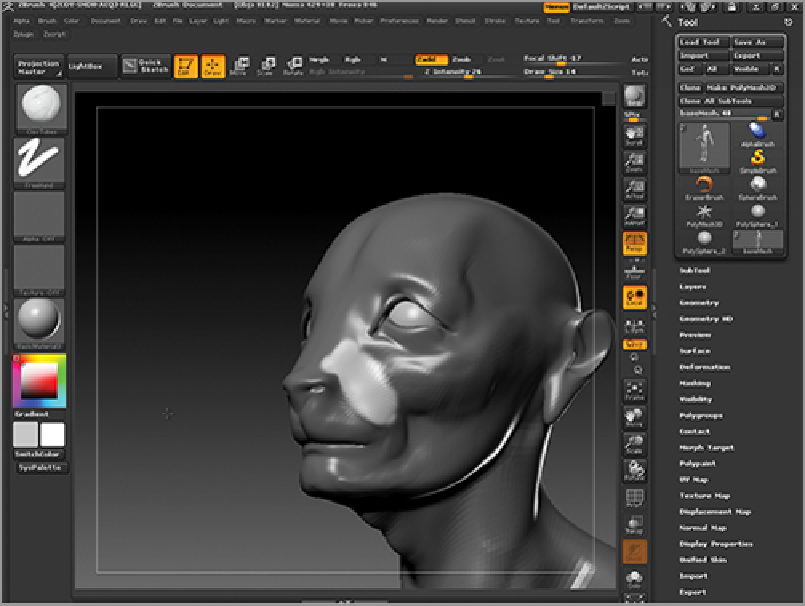Graphics Programs Reference
In-Depth Information
10.
Using the Move brush, pull the nasolabial fold out. Smooth the hard edges and refine the form further
with the Standard or Inflate brushes (
Figure 8-54
)
. Be sure to use the Clay Tubes brush to flesh out the
space between the fold and the cheekbones. This area is filled out with muscles of facial expression and
fatty tissue. We need to suggest this muscular anatomy exists to justify the existence of the nasolabial
folds. This is because these folds of skin exist partially as a result of pulling of muscles over time from
the cheekbone to the corners of the mouth.
11.
Moving up to the eyelids, I want to give the impression of puffy soft skin around the eyes. Mask the
brow line as seen in
Figure 8-55
and with the Clay Tubes brush, add a sock pucker form to the upper lid.
Remember to make sure the alpha is off on the Clay Tubes brush. This soft fleshiness will help suggest
the drooping, older eyelids. Note the eyes in photo reference (
Figure 8-56
) have a soft puffiness.
12.
Isolate the ear polygroup by Ctrl + Shift + Clicking on it. Select the Move brush and pull the shape of
the ear out from the sides of the head (
Figure 8-57
)
. Use the Move brush to shift the points of the ears to
fall downward with gravity—giving them a loose floppy look.
Figure 8-54:
Pull the nasolabial fold out with the Move brush

Search WWH ::

Custom Search